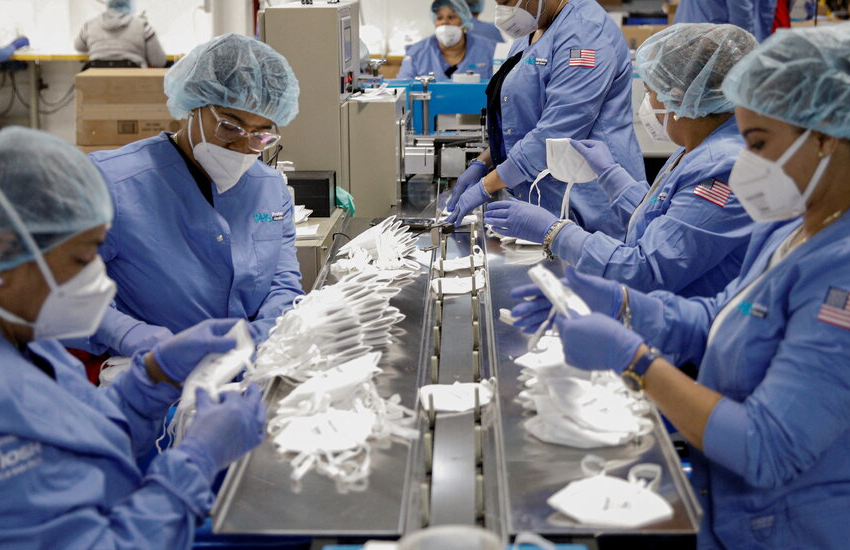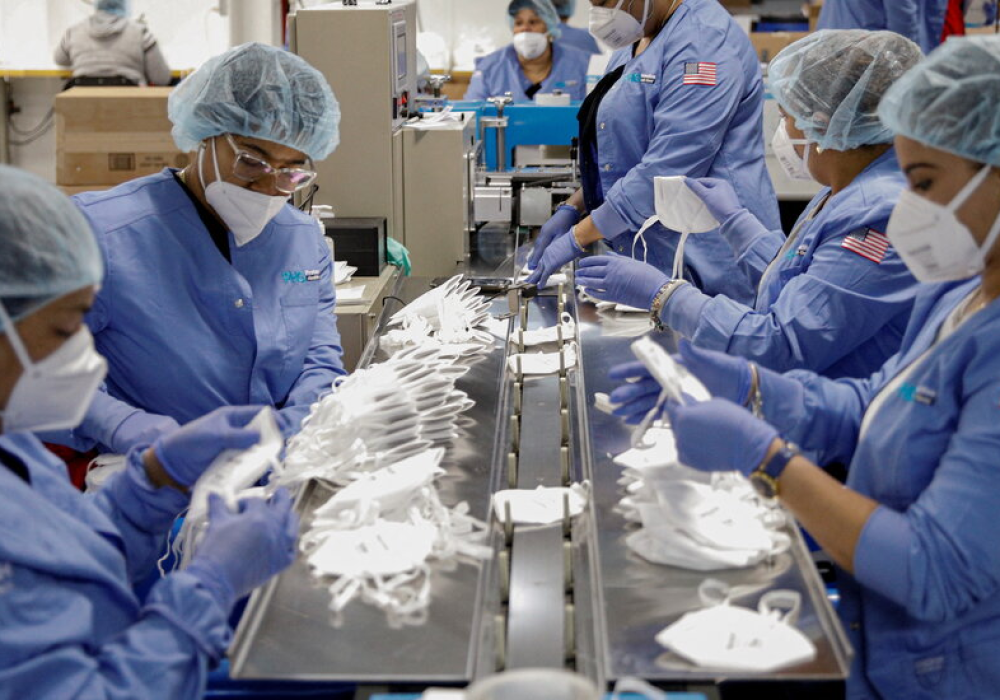WASHINGTON — Two years into the coronavirus pandemic, Americans who have had a hard time getting their hands on masks and at-home tests are suddenly being showered with offers of freebies — courtesy of taxpayers and the Biden administration, which had come under sharp criticism for not acting sooner.
On Wednesday, the administration announced that it would make 400 million nonsurgical N95 masks available free of charge at community health centers and retail pharmacies across the United States. The White House said that to “ensure broad access for all Americans,” there would be a limit of three masks per person.
The news came a day after the administration rolled out covidtests.gov, its new website where Americans can order at-home coronavirus tests at no cost.
Taken together, the moves represent a stepped-up effort by the White House to combat Omicron, the fast-moving coronavirus variant that first appeared in November and has fueled a spike in cases, hospitalizations and deaths across the country. But some public health experts said that while the efforts were welcome, they were too late.
“It will not be as impactful as it would have been had we done it at the beginning of the Omicron surge or the beginning of the Delta surge,” said Julia Raifman, a health law and public policy expert at the Boston University School of Public Health.
The White House called the distribution of masks the “largest deployment of personal protective equipment in U.S. history.” Wednesday’s announcement came days after the Centers for Disease Control and Prevention updated its mask guidance to acknowledge that cloth masks do not offer as much protection as surgical masks or respirators.
The N95 masks will come from the Strategic National Stockpile, the nation’s emergency reserve of medical supplies. The stockpile was badly depleted at the outset of the pandemic, leaving health care workers without masks and other personal protective gear essential to fighting the coronavirus. As late as December 2020, the United States was still facing alarming shortages of personal protective gear.
The decision to distribute masks from the stockpile to the public is a sharp departure from prior practice; in the past, they were reserved for health care workers.
According to the C.D.C.’s new description of masks, well-fitting respirators, including N95s, offer the highest level of protection. Their name refers to their ability to filter out 95 percent of all airborne particles when used correctly.
This month, in a series of opinion articles in the Journal of the American Medical Association, six former advisers to President Biden’s transition team called for a new pandemic strategy that would include making N95 masks free and easily available to all Americans, and vastly increasing the number of free coronavirus tests.
Jan. 19, 2022, 4:42 p.m. ET
But Mr. Biden faced challenges, particularly on the testing front. His administration had pledged to ramp up testing capacity but had not done so by the time the Omicron variant emerged. So while he announced shortly before Christmas that his administration would purchase 500 million rapid tests to distribute free to the public, Americans had to wait for them.
“They talked a lot about substantially ramping up testing and it didn’t happen,” said Dr. Ashish K. Jha, the dean of the Brown University School of Public Health, adding, “I think that was a real failure of the administration, to not have more tests available by the time we got into the holidays.”
Last week, Mr. Biden stepped up the testing initiative and announced that his administration would purchase another 500 million tests, bringing the total to one billion. Jeffrey D. Zients, the president’s coronavirus response coordinator, also told reporters last week that the administration was “actively exploring” ways to make high-quality masks available.
Dr. Jha said that distributing free high-quality masks may only “help on the margins,” because just a small minority of Americans are interested in wearing them. He said he agreed with Dr. Rochelle Walensky, the C.D.C. director, who has said that the best mask is one that people will wear.
The Coronavirus Pandemic: Key Things to Know
The White House said in a statement on Wednesday that the government would begin shipping N95 masks to pharmacies and health centers at the end of this week, and that the masks were expected to be available starting at the end of next week. The program will be in full gear by early February, the statement said.
An investigation by The New York Times published in March 2021 found that for years, the Strategic National Stockpile was heavily weighted toward protecting against bioterror attacks; throughout most of the past decade, nearly half its budget was spent on the anthrax vaccine. At the same time, China made half the world’s masks before the coronavirus emerged there, and the country was hoarding them.
The Biden administration promised to correct the stockpile’s deficiencies. At a Senate hearing last week, Dawn O’Connell, the assistant secretary for preparedness and response at the Department of Health and Human Services, said the stockpile now had 737 million N95 masks, all from domestic manufacturers.
Lisa O’Connor, the former chief nursing officer at Boston Medical Center, said she was concerned that distributing stockpile assets to the public would put health care workers at risk.
“This precious resource should be in the hands of health care providers only, which has been the practice and guidance for 20 years,” said Ms. O’Connor, who is now a health care consultant at FTI Consulting.
But Ms. O’Connell told senators last week that the government was soliciting proposals from companies that have the ability to produce 141 million N95 masks per month in a crisis and that would be able to manufacture them at a much lower rate when demand is lower.
The idea is for the stockpile to “keep this capacity that we currently have going,” she said, “even when demand diminishes.”










